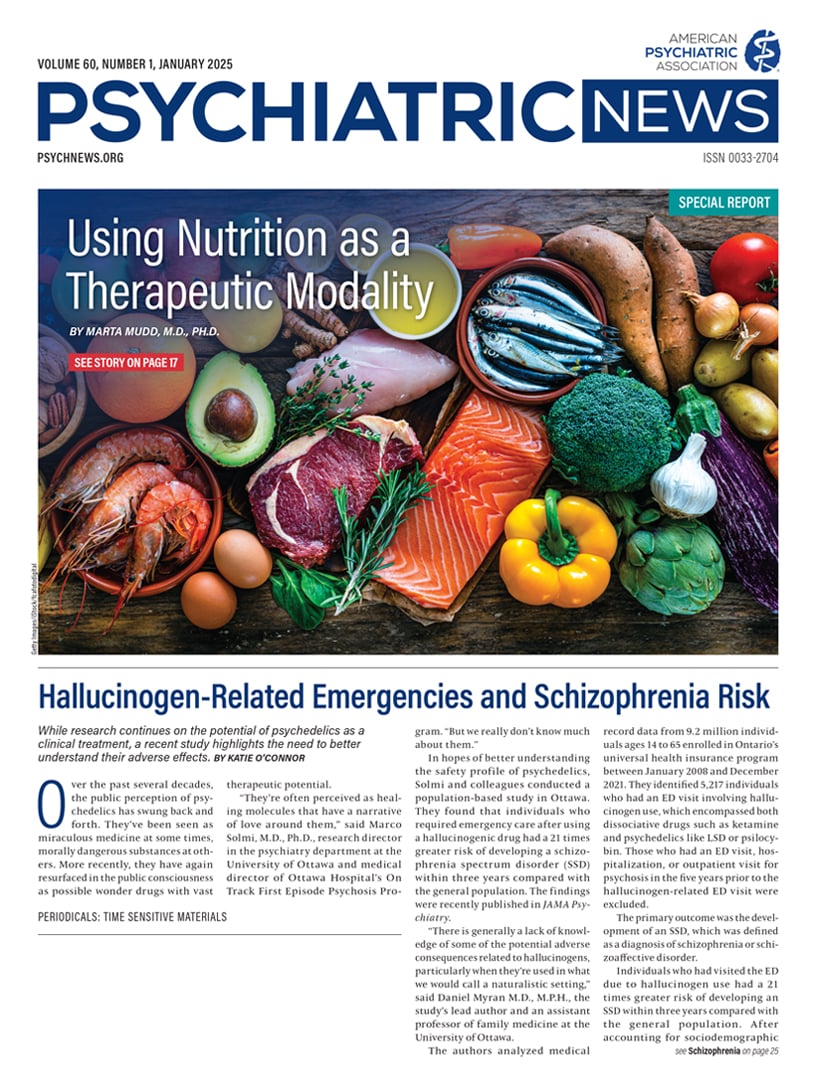There is mounting evidence that young people’s use of cannabis is fueling depression and suicide in this population, according to experts who recently spoke during a session at the American Academy of Child and Adolescent Psychiatry’s annual meeting.
“Expanded cannabis product offerings, increasing potency, and an increase in state and local legalization laws are posing unprecedented exposure to young people during a critical period of brain development,” said
esse D. Hinckley, M.D., Ph.D.J, associate clinical professor of psychiatry and co-founder of the addiction biology laboratory at the University of Colorado School of Medicine.
Research has found a strong correlation between cannabis use and depression and suicidality in adults, and although the association is not as definitive in youth, Hinckley said that emerging data suggests that adolescents are similarly impacted.
Suicide is the second-leading cause of death among U.S. youth, accounting for one in five deaths in young people. Nearly one-third (30%) of female youth “seriously considered” suicide, while 13% attempted to die by suicide, according to the 2023 Youth Risk Behavior Survey, as did 14% and 7% of male youth, respectively. According to the National Institute of Mental Health, 20% of U.S. youth ages 12 to 17 experienced past-year major depressive disorder (MDD) in 2021.
“Cannabis has changed as legalization has progressed,” Hinckley said. “The biggest impact has been in the concentration or percentage of THC [tetrahydrocannabinol] within products, the types of products available, and the frequency of use of concentrates rather than [less-potent] flower-based products.”
Tests performed on confiscated cannabis have found it contains 10 times greater THC, the psychoactive compound that makes users feel high, than in the late 1970s. Back then, flower products were around 1% to 3% THC; as of 2023, they were 16% to 25% in most states, with one grower reportedly producing a plant that was 40% TCH. Concentrated products, such as vapes, edibles, and wax/dabs, are far more popular, and now routinely contain 60-90% THC, up from 20-30% a few decades prior.
“In other words, even products marketed as ‘concentrates’ 15 years ago weren’t as potent as many flower-based products are today,” Hinckley said.
Dose-Response Relationship
A study by Hinckley and colleagues issued by the Journal of the American Academy of Child and Adolescent Psychiatry in 2023 examined the results of a survey of 10,123 U.S. adolescents who provided data on their demographics, substance use, depression, suicidality, and mental health. They compared adolescents based on their cannabis use and found that cannabis users were:
•
2.35 times more likely to have MDD, 3.32 times more likely to have a past-12-month major depressive episode, and more likely to have greater depression severity.
•
3.7 times more likely to report suicide attempt—and those increased odds remained even after researchers controlled for whether the youth had depression.
•
More likely to report feelings of guilt, appetite problems, and suicidal ideation. (However, researchers found no difference between adolescent cannabis users and never-users on other common mental health symptoms, such as anhedonia, sleep problems, and fatigue.)
Hinckley and colleagues found a dose-response relationship, meaning that the greater the youth’s exposure to cannabis, the higher the odds of MDD, suicidality, and more severe depression. “For example, youth who used cannabis occasionally—once a month or less—in the past year were five times more likely to have attempted suicide than youth who did not use cannabis at all,” Hinckley said. “Meanwhile, youth who used cannabis one to two days a week or three to four days a week were seven and nine times more likely to have attempted suicide, respectively.”
Hinckley also reviewed several published meta-analyses and longitudinal studies on the topic that came to similar conclusions about the association. One study issued in Lancet Psychiatry by Edmund Silins and colleagues in 2014 found that daily users of cannabis before age 17 were nearly seven times more likely to have attempted suicide as an adult.
Hinckley said that overall, the data points to an increased need to screen all youth for suicidality as well as for cannabis use. When it comes to youth, “cannabis prevention and early intervention are suicide prevention,” Hinckley said. “There’s an even greater need for these programs in states that have passed recreational or medical cannabis laws, where youth cannabis use is more prevalent.”
With Legalization, Increasing Use
According to the 2024 Monitoring the Future (MTF) survey, cannabis use in recent decades by youth ages 12 to 17 has remained mostly flat yet substantial: 29% of 12th graders reported past-year cannabis use. However, this tells only part of the story. Expanding legalization has resulted in 43% of young adults 19 to 30 years old reporting past-year cannabis use in the 2024 MTF, amounting to a 40-year record.
“At age 18, our brains do not magically flip a switch and finish developing,” Hinckley said. “This is a population at risk, and [cannabis] use rates are still going up.”
Furthermore, in May 2024, the U.S. Department of Justice proposed reclassifying marijuana as a Schedule III drug, citing its “accepted medical use” and less potential for abuse-related harms than other Schedule I and II drugs. (APA
opposes this rescheduling because of the potential to increase public acceptance and use, as well as lead to psychiatric harms.)
In 1995, just one state—California—had legalized cannabis, and only for medical use, noted Cristopher Joseph Hammond, M.D., Ph.D., an assistant professor of psychiatry at Johns Hopkins University. Now, the majority of U.S. states have legalized cannabis for medical and/or recreational purposes.
“Along with that has come a dramatic explosion of commercialization,” Hammons said, “including novel products, formulations, and methods of administration of cannabinoids … such as concentrates, solid concentrates, edibles, beverages, and topical forms.”
For example, a newer psychoactive hemp derivative known as Delta-8-TCH was used by 12% of twelfth graders in 2024, according to the MTF, which assessed the product’s uptake for the first time that year. Altogether, the U.S. cannabis industry is expected to take in about
$42 billion in revenue in 2024.
Hammond reviewed a study for which he and colleagues examined the impact of state cannabis laws on the 113,512 U.S. youth suicides (among 12- to 25-year-olds) reported from 2000 to 2019. He and colleagues found an overall suicide rate of 10.9 per 100,000 youth during that timeframe, but a rate of 12.8 deaths in states allowing medical use of cannabis. The rate climbed to 16.7 deaths per 100,000 in states allowing recreational cannabis. That translates to 5,000 youth suicide deaths that can be attributed to cannabis legalization laws, even after controlling for confounding variables, according to their study issued by the Journal of the American Academy of Child and Adolescent Psychiatry in 2023.
Hammond said that there is a wide gulf between public perception and reality when it comes to cannabis’ impact on adolescent mental health. One recent study suggests psychiatrists have a role to play in educating young patients and their families on the subject, he said. Researchers recruited 150 parents and their children who were receiving treatment at mood disorders clinics in one of 11 states. They found that more than 75% of youth and 65% of their parents perceived cannabis and CBD to be safe and effective mental health treatments, with half of respondents believing that clinicians should be prescribing or recommending cannabis for their patients. ■

